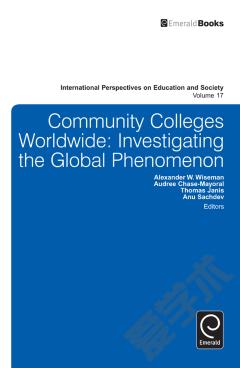Community Colleges Worldwide —— Investigating the Global Phenomenon
----- 世界范围内的社区大学:研究全球现象
This volume investigates the spread and development of two-year and community college institutions worldwide. While these institutions may be called by different names and may not all be structured the same in all international contexts, their core mission remains surprisingly consistent: to respond to the needs of their local community. Following the example of the German Volkshochschule, this model has spread to the United States, Canada, Australia, the United Kingdom, India, South Africa, Thailand, and other nations worldwide. While the community college 'label' is debatable and possibly controversial in and of itself, what these institutions all have in common is that they seek to serve the needs of their local communities by bridging the gap between academia and technical training with learning that is open and accessible. The students that these institutions serve come from various socioeconomic backgrounds, ages, races, cultures, and genders. Whether they provide these students with technical training, the ability to transfer to four-year higher education institutions, remedial education, or lifelong learning opportunities, these models adapt and institutionalize themselves differently around the world to meet these various community needs. This volume seeks to analyze the different ways this model has served communities in different international contexts, but for similar purposes.
{{comment.content}}








 京公网安备 11010802027623号
京公网安备 11010802027623号